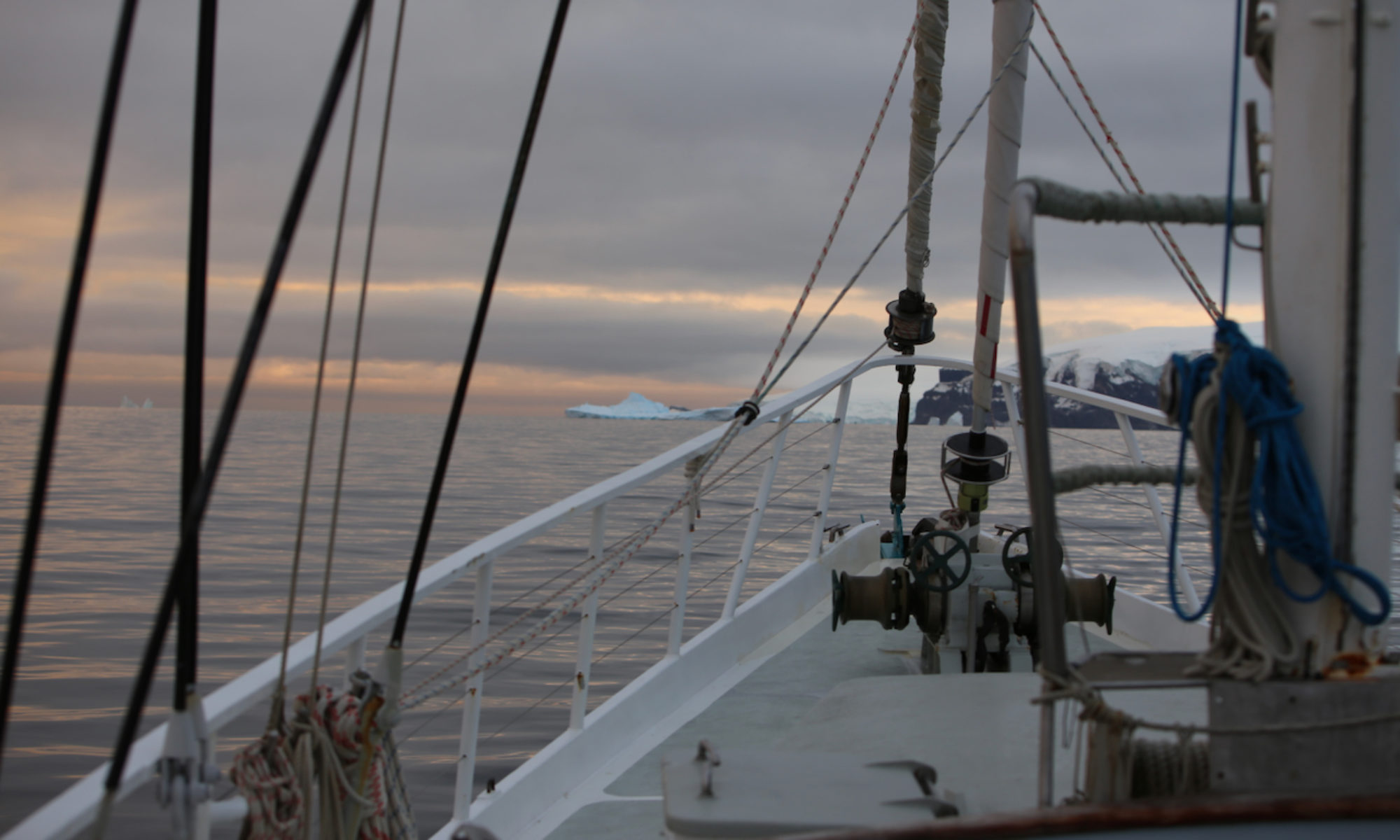Finally some news from the B121 team from the Antarctic Peninsula. The last few days have been extremely busy but let’s begin with with the first achievement of the mission: getting here!
The Drake Passage: We left Ushuaia on the 23rd and made our way down the Beagle Channel, turning South, passing Cape Horn and then heading south through the Drake Passage. Unfortunately headwinds delayed us for a few hours around Cape Horn, which had the effect of getting us caught in 45 knot south-westerly winds in the middle of the Drake: most of us were out, laying in our bunks trying to cope with strong sea sickness, but our captain got us safely through and we can say we survived it with pride!
On the 4th day from port we finally saw land ahead, and what a beautiful land: Antartica’s Peninsula!! What a sight… We arrived on a beautiful sunny breezeless day. For some of our team like Charlene and Franz it was the first time in Antartica, but also the more habitual others were moved by its wonders: the dark land, the white and blue shades of its glaciers, the extraordinary fauna and the charm of it all. What a privilege to be here!

We made our first sample station in Melchior Island´s – Omega Inlet, a small island group between Anvers and Brabant Island. Here we started testing the platform, all the gears, and how the work needs to get organized on board in this limited but well designed space. The past few days were extremely and unexpectedly good in weather (no wind and pure sunshine), probably a gift from the lonely continent for our endurance. The first day of testing has proved to be incredibly productive, we collected an enormous amount of samples, had three successful dives, deployed dredges, bottom grabs and caught 13 fish in the first day. Getting water samples for eDNA (developing process to detect biodiversity) sampling has shown to be working well, we have found suitable sites for conducting intertidal transects and much more. Despite troubles with our ROV (remote submarine) we got stunning footage from the under water life which we will share with you in due time. In the coming days we will explain our activities in more detail and explain the different scientific angles we are taking!
Small breakdown: So far we have collected 214 samples (including 1800 organisms), tested 14 different sampling methods, collected almost 400 GB of footage for our documentary and much more (data maps, fauna sightings, etc).
That’s all for now…
Stay tuned


